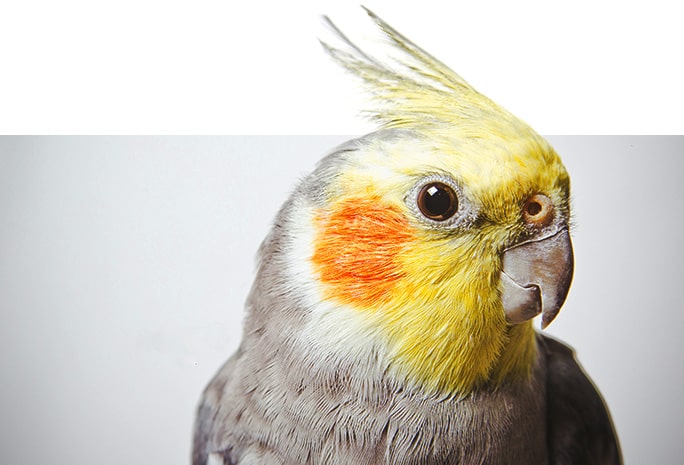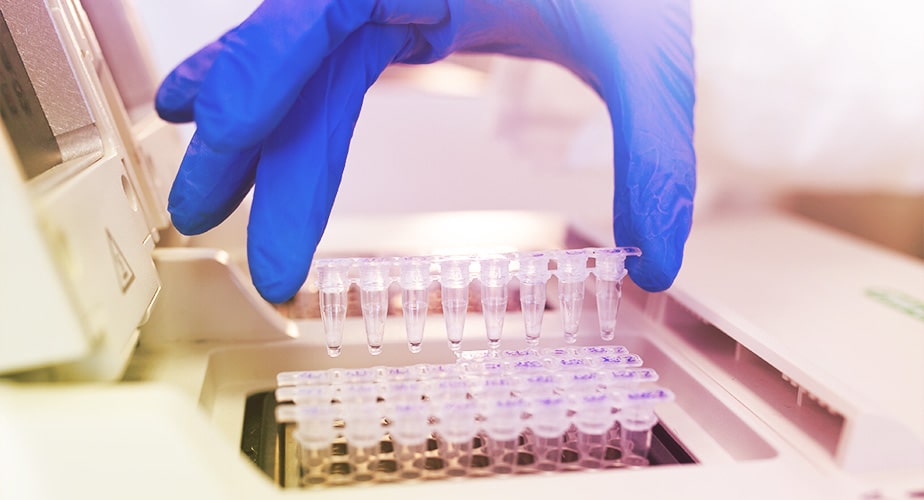
Molecular techniques have become the first choice as a diagnostic tool for the most common diseases in animals. To detect the infectious microorganisms that cause these pathologies, we use molecular techniques in which a specific DNA fragment that identifies the microorganism is sought.
The early detection of these diseases through periodic check-ups of the zoological centers and especially when introducing imported animals, prevents the contagion of existing specimens, ensuring the quality of animal´s life and their survival.
PBFD (Psittacine Beak and Feather Disease) or beak and feather disease is a specific disease of psittacines caused by a virus of the Circoviridae family that affects most parrots. Beak and feather disease can have serious consequences, especially in young birds, whose infection can be fatal. Older birds can outgrow the disease with little sequelae, although some studies suggest that these surviving birds become carriers capable of transmitting the disease.
Samples: blood samples.
Necropsy: liver.
Psittacosis or chlamydiasis is an infectious disease caused by the bacterium Chlamydophila psittaci (Chlamydia psittaci). The term psittacosis is used if the infection occurs in psittacines and avian chlamydiosis for other bird species. Chlamydial infection has been described throughout the world causing considerable economic losses in poultry farms. Early detection is the best tool to avoid such losses. On the other hand, psittacosis poses a danger to people, since the bacteria can be transmitted to humans.
Samples: cloacal swab or surface samples from the aviary.
Necropsy: spleen or liver.
Avian polyomavirus is a virus first isolated in budgerigars, causing an acute fatal disease in birds. There is no treatment for this disease, so early detection is crucial to ensure the survival of the aviary.
Samples: blood sample.
Necropsy: spleen, liver or kidney.
Avian bornavirus or proventricular dilatation disease (PDD) is a viral disease of psittaciforms. It mainly affects the nerves of the gastrointestinal system, causing digestive problems, such as vomiting, regurgitation or weight loss, as well as neural symptoms such as weakness, axia or tremors. Like many viral diseases, there is no 100% effective treatment, so prevention and early diagnosis by PCR are crucial.
Samples: breast feathers.
Necropsy: brain.
Caused by a herpesvirus, Pacheco’s disease is a very serious and contagious disease, which can cause the death of the bird even before of the the first obvious symptoms develop. It is highly recommended to carry out analyzes and quarantine of all imported birds, before introducing them into the aviary, since it can cause the death of 100% of the specimens.
Samples: blood sample.
Necropsy: spleen, liver or kidney.
Pigeon circovirus (PiCV) belongs to the Circoviridae family and shares DNA homology with the virus that causes PBFD in Psittacidae. Infection with PiCV has been associated with Young Pigeon Syndrome (YPDS), which is considered a multifactorial disease. Infections of young racing pigeons with pigeon and falcon herpesviruses, adenoviruses, and PiCV are common, and these viruses are accepted to be involved in the pathogenesis of YPDS.
Samples: blood sample or surface samples from the aviary.
Necropsy: spleen or liver.
Herpesvirus infections in falcons are often referred to as “herpesviral inclusion body disease.” It is now known that the herpesvirus that causes this disease in falcons and other birds of prey such as owls, goshawks or kestrels, is the same as the herpesvirus found in pigeons, “Columbid herpesvirus-1”, or CoHV-1. This type of herpes virus has been found in both young and adult falcons. Infected animals usually die one to two days after clinical signs appear. The mortality rate is close to 100%.
Samples: blood sample. Environmental tests can be performed by taking surface samples from the aviary.
Necropsy: spleen or liver.
Avian aspergillosis, is a disease caused by the fungus Aspergillus fumigatus, affects all types of birds, especially those immunologically depressed or under stress. The spores of the fungus are found in the environment and can be inhaled by birds or even penetrate through the egg shell, finding an optimal environment to reproduce and cause the disease acutely.
Samples: pharyngeal swab and cloacal swab. Environmental tests can be performed by taking surface samples from the aviary.

Fowlpox is a viral disease caused by the poxvirus Variola avium. This disease is characterized by the formation of eruptive lesions, crusts on the skin, and diphtheria-like lesions in the digestive and respiratory tracts. In the cutaneous form, the mortality rate is generally low and affected birds are more likely to recover than those affected by the diphtheria form. In the diphtheria form, proliferative lesions in the nasal passages, larynx, and trachea can cause respiratory distress and death by suffocation. Fowlpox causes a transient drop in egg production and reduced growth rate in young birds. It is a disease with worldwide distribution and has been found in birds of more than 60 species from 20 families. Among them domestic ones such as chickens, turkeys, pigeons and canaries.
Samples: blood sample.
Avian adenovirus affects chickens, ducks, geese, turkeys, pheasants, and other bird species throughout the world. Specific syndromes associated with avian adenoviruses include Quail Bronchitis, Egg Drop Syndrome, Hemorrhagic Enteritis, or Inclusion Body Hepatitis, among others.
The main site of virus replication is the intestine, so excretion in faeces is the main vehicle of transmission. When infection occurs, the virus remains latent until the bird enters a period of stress that triggers clinical manifestations.
Samples: blood sample and cloacal swab. Stool samples may also be tested.
Bordetella avium is a Gram negative bacterium that causes Avian Bordethelosis or Coryza of Turkeys or Infectious Coryza. It is a highly contagious disease of the upper respiratory tract, which produces high oculo-nasal discharge, sneezing, breathing with open beaks or gasping, conjunctivitis, dry cough and dyspnea.
Bordetellosis is a disease of great economic importance in turkeys and quail, although its natural host is the turkey, it has also been described disease in chickens and other avian species. Bordetellosis mainly affects young birds and, although the disease is not fatal, carrier birds are susceptible to secondary infections that are often fatal. This bacterium is also frequently associated with other respiratory diseases such as Newcastle or Mycoplasma spp.
Samples: pharyngeal swab.
Necropsy: samples from the lung or trachea.
New Castle disease (ND) is a viral disease caused by a paramyxovirus that affects both domestic and wild avian species.
Transmission occurs through contaminated bird faeces or other excretions, and clinical manifestations vary greatly depending on the species of bird and the strain of virus causing the infection.
Samples: pharyngeal swab, cloacal swab or feces.
Necropsy: samples of the liver, spleen or brain.
It is a highly contagious disease that affects chickens, turkeys, ducks, guinea fowl and ostriches. Gumboro disease is caused by the infectious bursal disease virus (IBDV). IBDV is transmitted orally, through ingestion of food or water contaminated with feces from infected animals, through the respiratory route, through the conjunctival route, and through some vectors such as mites and beetles.
Gumboro disease is characterized by immunosuppression in affected birds. In the acute form, birds are depressed, debilitated and dehydrated, and watery diarrhea, inflammation of the cloaca and blood-stained stools may occur.
Samples: pharyngeal swab, blood or stool samples.
Necropsy: samples of the spleen or thymus.
The causal agent is the chicken infectious anemia virus (CAV).
Chickens are the only species susceptible to infection. All ages are susceptible to CAV infection, but with age chickens become resistant and can be infected but will not develop the disease.
Samples: blood samples.
Necropsy: samples of the liver, spleen or thymus.
Marek’s disease or chicken paralysis is a viral disease caused by Herpesvirus 2 (GaHV-2).
This disease constitutes a huge economic danger for young adult farms, since it mainly attacks young adults ready for meat or egg production, causing farm profitability to drop.
Samples: feather or blood samples.
Mycobacterium avium subspecies paratuberculosis (MAP) is a Gram-positive acid-fast bacterium that can cause a chronic intestinal disease called Johne’s disease in different animal species, mainly cattle, although it can also affect camelids, sheep, goats, wild carnivores and primates. In cattle it causes the disease called bovine paratuberculosis, which consists of a chronic lesion in the intestine that considerably weakens the animal and causes losses in livestock farms due to a decrease in milk production.
This bacterium is characterized by its slow growth and difficult culture conditions, so the use of molecular techniques for its detection has made it possible to obviate many of these drawbacks and obtain robust and rapid results.
Samples: stool samples or blood samples.
Necropsy: intestine samples or lymph nodes.
Salmonella is a Gram negative bacterium belonging to the Enterobacteriaceae family.
It constitutes an important group of pathogens for animals and people. In humans it can cause intestinal and systemic infections as a result of the ingestion of food contaminated with the bacteria, although it is also a bacterium present in poultry (chickens, turkeys, etc.), as well as in cattle and pigs. In addition, some salmonellae are common on the skin of turtles and many reptiles, so precautions must be taken when handling these types of animals.
Samples: feces from at least three consecutive days.
West Nile fever is a disease caused by the West Nile flavivirus. It causes disease in humans, horses and some birds. Most affected individuals have few clinical signs, but in some cases individulas can develop severe neurological disease that can be fatal.
West Nile virus has an extremely wide host range. It replicates in birds, reptiles, amphibians, mammals, mosquitoes, and ticks. Birds are the natural reservoir of the virus.
Samples: blood samples.
Necropsy: samples cer ebro, kidney and heart.
*If the analysis you need is not available, contact us.

Facing new challenges is what motivates me, finding a way to solve them is my motto. They are more than 15 years of experience in laboratory operations and research and development.
Implication and great capacity for resolution are essential qualities for research.